From the King's own plant paradise to the splendour of Elizabethan roses, explore Britain's greatest royal gardens in our guide.
The 10 most beautiful royal gardens in the UK
Highgrove Gardens, Gloucestershire
World famous for its unique gardens, each with their own distinctive style and story, Highgrove Gardens is a glorious testament to the gardening passion of Charles III. For the past 40 years, foremost garden designers have worked alongside the-then Prince of Wales to bring his visions to life in this most personal of royal landscapes.
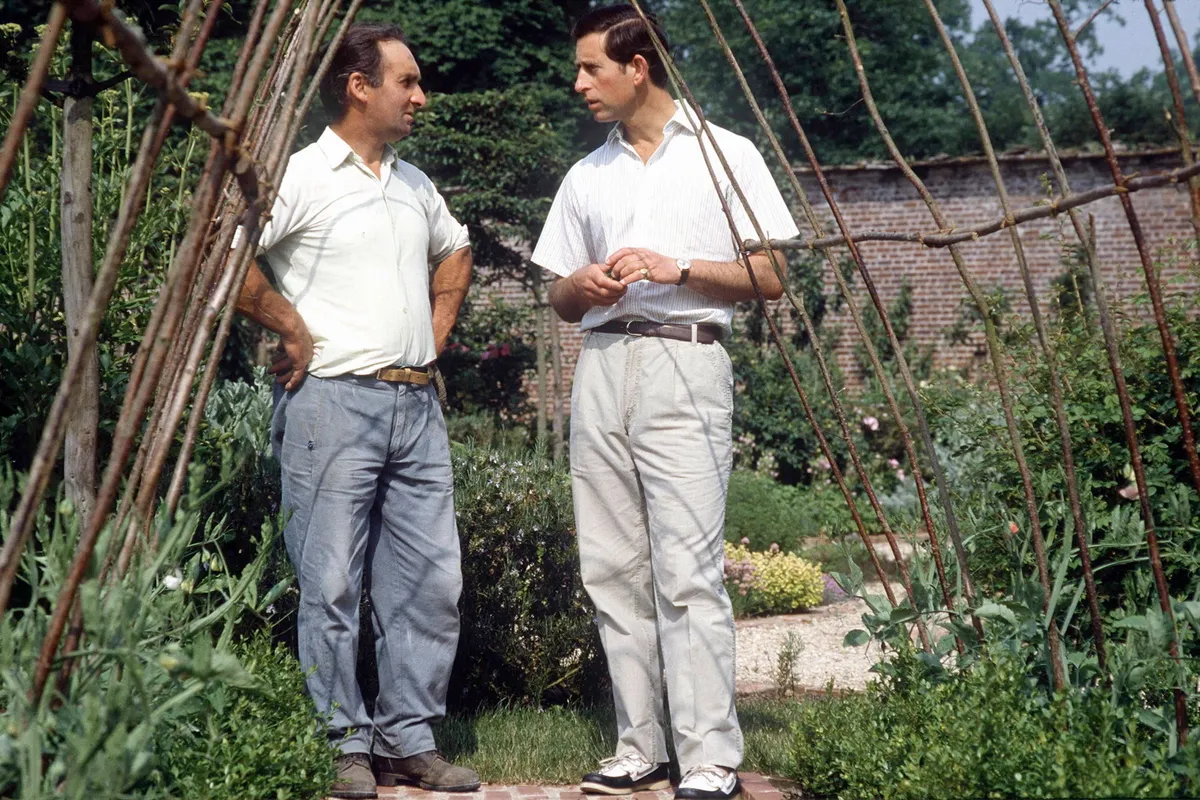
In spring and early summer, Highgrove greets its visitors with the spangled mauves, whites and yellows of orchid, buttercup, alliums and wild parsley in the four-acre Wild Meadow. It is a testament to the King’s organic principles and his early collaboration with the pioneering naturalist Miriam Rothschild.
The meadow is cut for hay in in autumn and then grazed by sheep, who create a moving tableau, framed by the fastigiate hornbeams that bring formality to this rural scene.
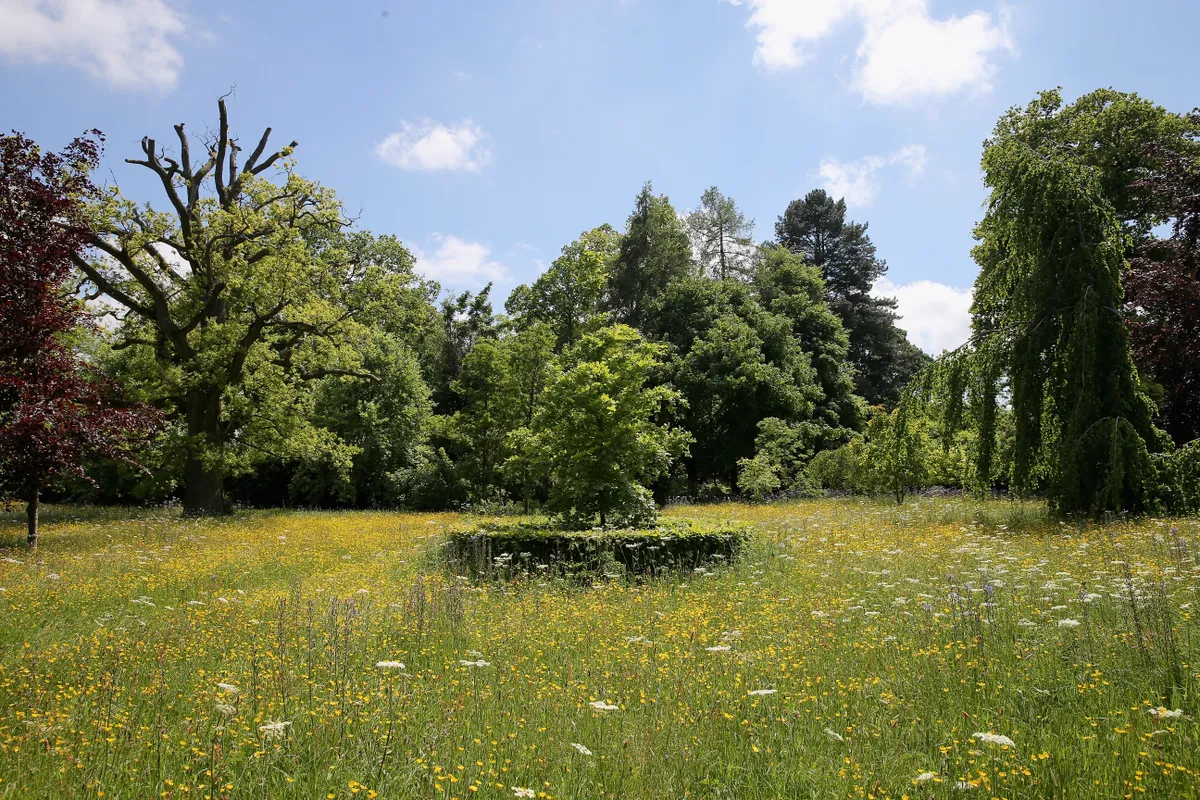
Quirky topiary frames the views of the house itself down the long Thyme Walk, with plump pudding shapes in golden yew. A snail, a spiral and – of course – a crown owe their individuality to each gardener being given a bush to shape.
More related content:
- Meadow guide: where to see and best wildflowers to plant
- British tree guide: how to identify and where to see
- Podcast: How rewilding could transform the countryside for wildlife and people
Hay meadow./Credit: Getty

Drawing on traditional English gardening, the Old and New Cottage Gardens also surprise with inspiration drawn from the colours of Tibet in a planting scheme designed by Charles III and the late Rosemary Verey, doyenne of English horticulture.
A Victorian-inspired stumpery of ferns and upturned roots by award-winning designers Julian and Isabel Bannerman provides a damp green setting for a magnificent Gunnera manicata set atop a two-metre stone tower.
Emerging from the deep shade onto oak dappled lawn, David Wynne’s sculpture of the Goddess of the Woods sits contemplating temples appropriately crafted from green oak.
An arboretum reflects the king’s commitment to sustainability with acer, beech and cherries underplanted with over 40,000 snowdrops complementing sweet woodruff and dog’s mercury buried for decades in the cool earth.
Serving delicious teas, scones and lunch options, The Orchard Room is open to guests who have explored the gardens. For special occasions, you can even book a ‘Champagne Tea Tour’.
Visit Highgrove Gardens: Opening times vary. Book a guided walk or garden tour from £22
Hatfield Park, Hertfordshire
Set within deer-grazed parkland and surrounded by five centuries of gardens, Hatfield House is a vision of England’s past.
Here the young Elizabeth I received news of her sister’s death and her own royal destiny, here she held her first council of state, ushering in the Elizabethan age.
It was Robert Cecil, son of Elizabeth’s most famous adviser, who built the ‘new’ Hatfield House in 1607.
Anxious to impress his new king, James I, Robert employed John Tradescant, gardener and plantsman, to seek out rare plants from across Europe.
Tradescant travelled to nurseries in the Low Countries for rare bulbs and fruit trees to embellish Hatfield’s gardens with fine blossoms and exquisite scents, which still inspire the gardens of today.
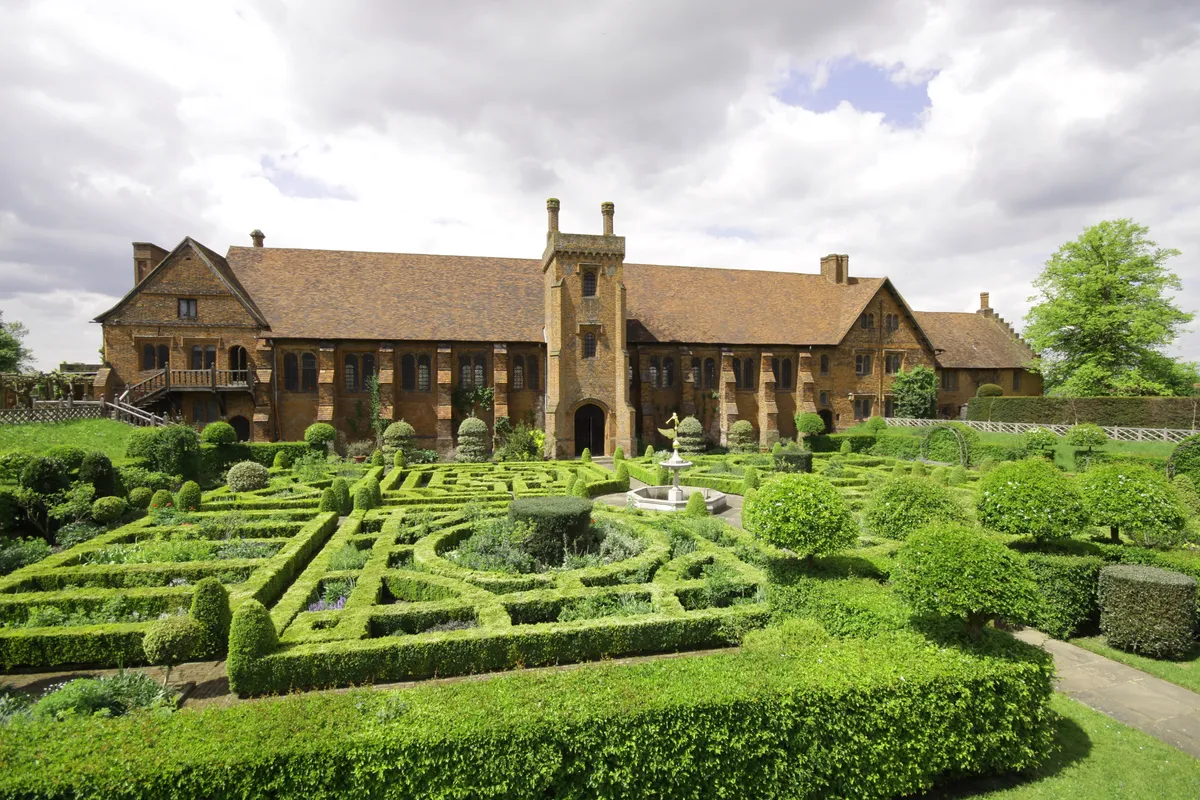
Recreated in the 1980s, the knot gardens of the Old Palace are now complemented by the colour-themed Edwardian borders and the new Sundial Garden created to celebrate 400 years of the Cecil family at Hatfield.
Set against the north front of the house, the magnificent kinetic water sculpture ‘Renaissance’ references the automata and ‘giochi d’acque’ (water jokes) beloved of Elizabethan garden creators.
Inside the house a carved wooden stair post depicts Tradescant himself, replete with rake, basket of fruits and a jaunty hat.
In the Marble Hall a portrait of Elizabeth I details her bodice richly embroidered with honeysuckle, pinks, roses and violets echoing the planting in Hatfield’s gardens, while outside Elizabeth and her courtiers still haunt the Lime Walk in a life-sized stone frieze.
Visit Hatfield House: Gardens open from 1 April, house from 1 June. £12 for gardens and park; £22 for house, gardens and park.
Hampton Court Palace, London
Centuries of royal gardeners have transformed this riverside palace to a playground for monarchs and a delight for horticulturalists.
Henry VIII led his wives through richly patterned knot gardens alive with gilded heraldic beasts, before tempting them into domed banqueting houses with views far along the Thames.
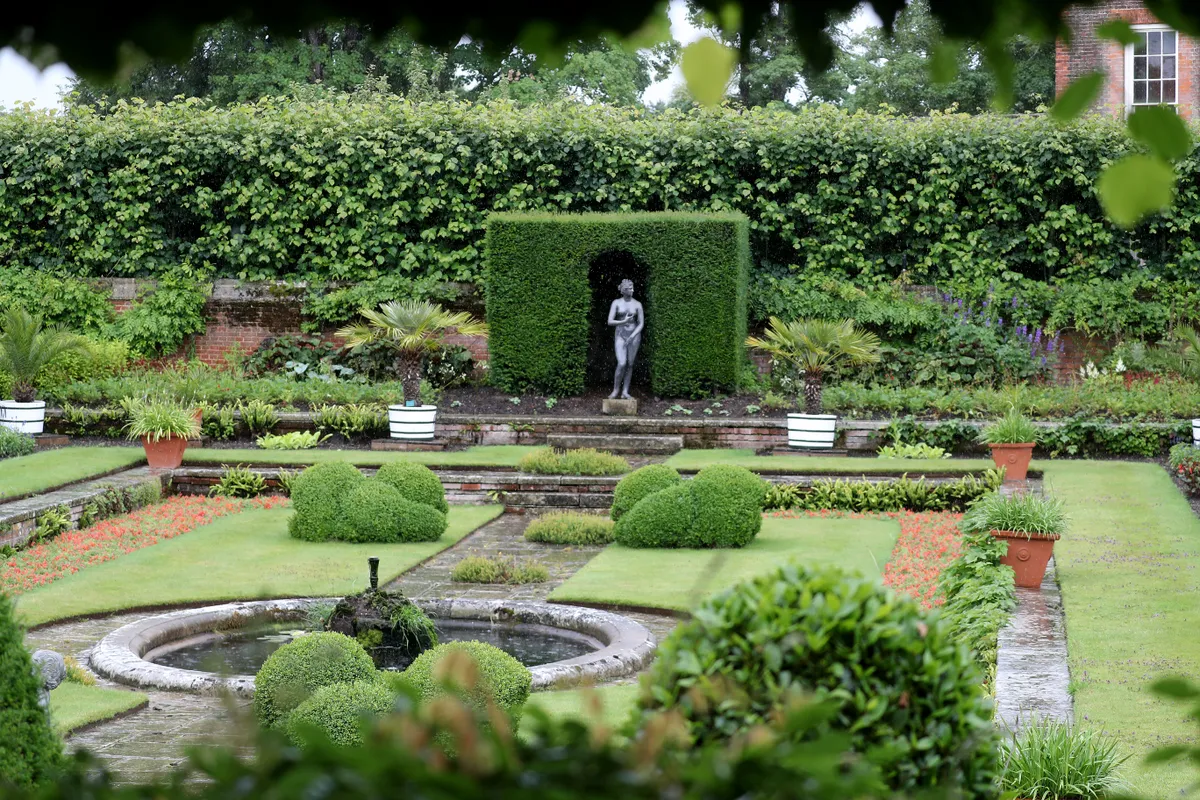
William III and Mary II brought designers from Holland to lay out the formal Privy Gardens, now recreated after meticulous archaeological excavation. Replete with statues and clipped topiary, gilded screens from French master craftsmen allow glimpses of the world beyond.
Three rectangular gardens beyond the Privy Garden reflect the 16th-century fishponds located here to serve the palace kitchens but by the late 17th century re-purposed to shelter exotics including oranges, myrtles, oleanders and aloes.
A vine planted by the great 18th-century designer Lancelot ‘Capability’ Brown has its own vast glasshouse and in late summer visitors can feast like royalty on the sweet fruits before tackling the famous Hampton Court Maze, created more than 300 years ago and still confounding its modern visitors.
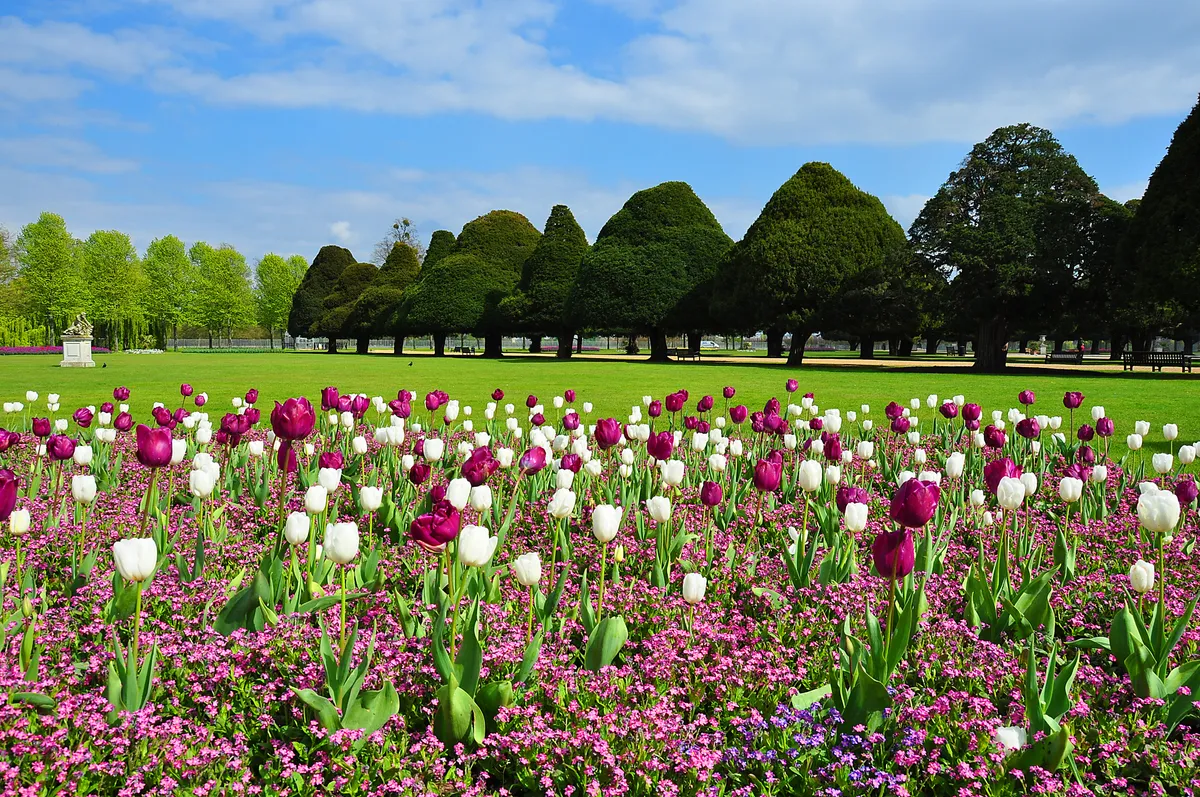
Brightly coloured annual bedding drew holiday crowds in the 19th-century Queen Victoria, opened the gardens to the public in 1838, while long herbaceous borders attracted artists in the palace’s Edwardian heyday, when the river thronged with pleasure craft bringing trippers to the palace gardens as it once brought Tudor courtiers, and now brings 21st-century visitors.
Inside the palace Henry himself appears in portrait, while his wife Catherine Howard runs through the haunted gallery pleading in vain for mercy from the man who once led her round his gardens.
Visit Hampton Court Palace. Opening times vary. Entry: £26.10 for palace and gardens.
Sandringham Estate, Norfolk
A glorious celebration of gardens awaits visitors to this much-loved country retreat of the British royal family.
Set within 600 acres of waymarked parkland, the House and adjoining gardens have been developed by each monarch since 1863, when Queen Victoria purchased the estate for the-then Prince of Wales (future King Edward VII) and his new wife Princess Alexandra of Denmark.
A new house was constructed for the couple, surrounded by formal parterre gardens, forming a backdrop for family tea parties on the balustraded terrace.
South of the house, an immense rock garden planted with exotic trees and shrubs shelters Queen Alexandra’s Summerhouse, set beside a cascading stream feeding into the lake below.
A walk continues through sweeping lawns towards the walled gardens that once supplied the royal kitchens, now a mix of flower beds and grass.
In 1947, Sir Geoffrey Jellicoe designed a formal garden to the north of the house for George VI, which Jellicoe described as a secret garden based on “the Chinese conception of a box within a box within a box”.
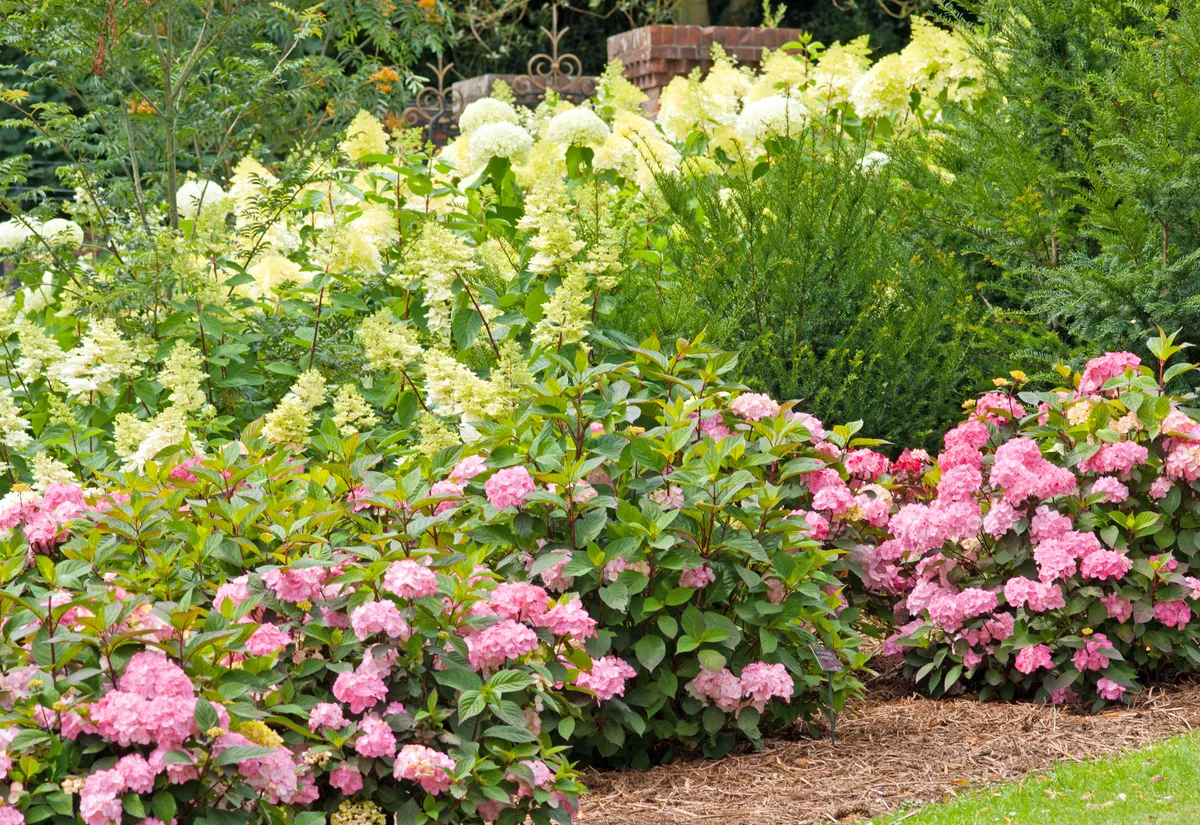
In 2023, King Charles III chose designers ‘Landform’ to create a sustainable garden on the site of the old parterre gardens. Pink and yellow roses will join 5,000 yews and 4,280 herbaceous plants and bulbs to create a rich source of pollen for insects, as well as seasonal colour for visitors.
Visit Sandringham Estate Opening times vary. Entry: £13 gardens; £23 house and gardens.
Hever Castle, Kent
Rising from the still, reflective waters of its encircling moat, this fairytale castle was the childhood home of Anne Boleyn, second wife of Henry VIII.
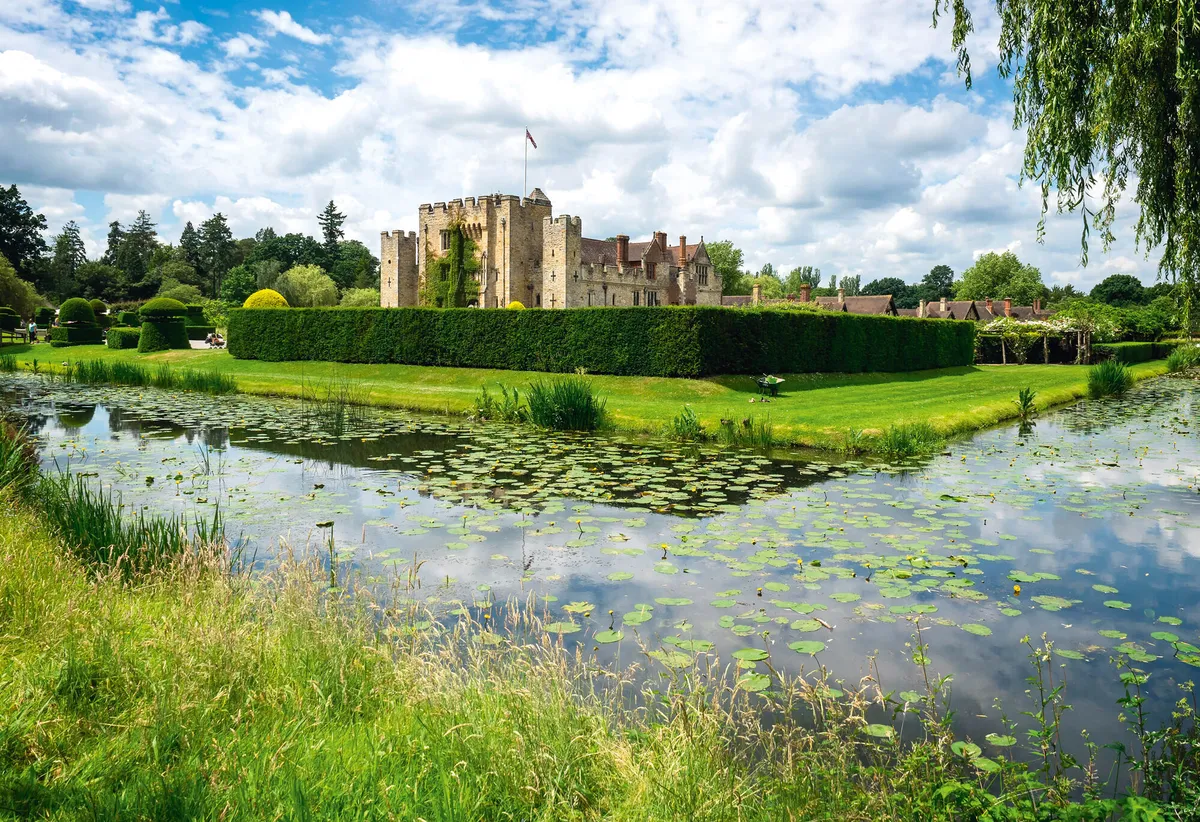
It was Henry’s passion and Anne’s insistence on marriage that altered the course of English history.
With the fall of the Boleyn family, the house and grounds slept until awakened by William Waldorf Astor, whose wealth and imagination recreated a lavish Tudor home and gardens in 1904-8.
With a passion for history and antiquities, Astor commissioned a series of gardens spread over 125 acres to house his collections of Italian sculptures and classical antiquities. Over 1,000 men worked on the grand design, which took four years to construct, including the 38-acre lake.
Jets of water sparkle in the sun from the immense Loggia fountain, a cascade gushes down stone steps while cool grottoes drip in the shade, and the Half Moon Pond reflects the sky in its still waters. A splashing Water Maze on Sixteen Acre Island delights children and adults alike in true Renaissance style, while the Millennium Fountain brings us up to date.
But history is never far away and the magnificent Yew Maze, topiary garden and Anne Boleyn’s Walk recall the heyday of the Boleyn family.
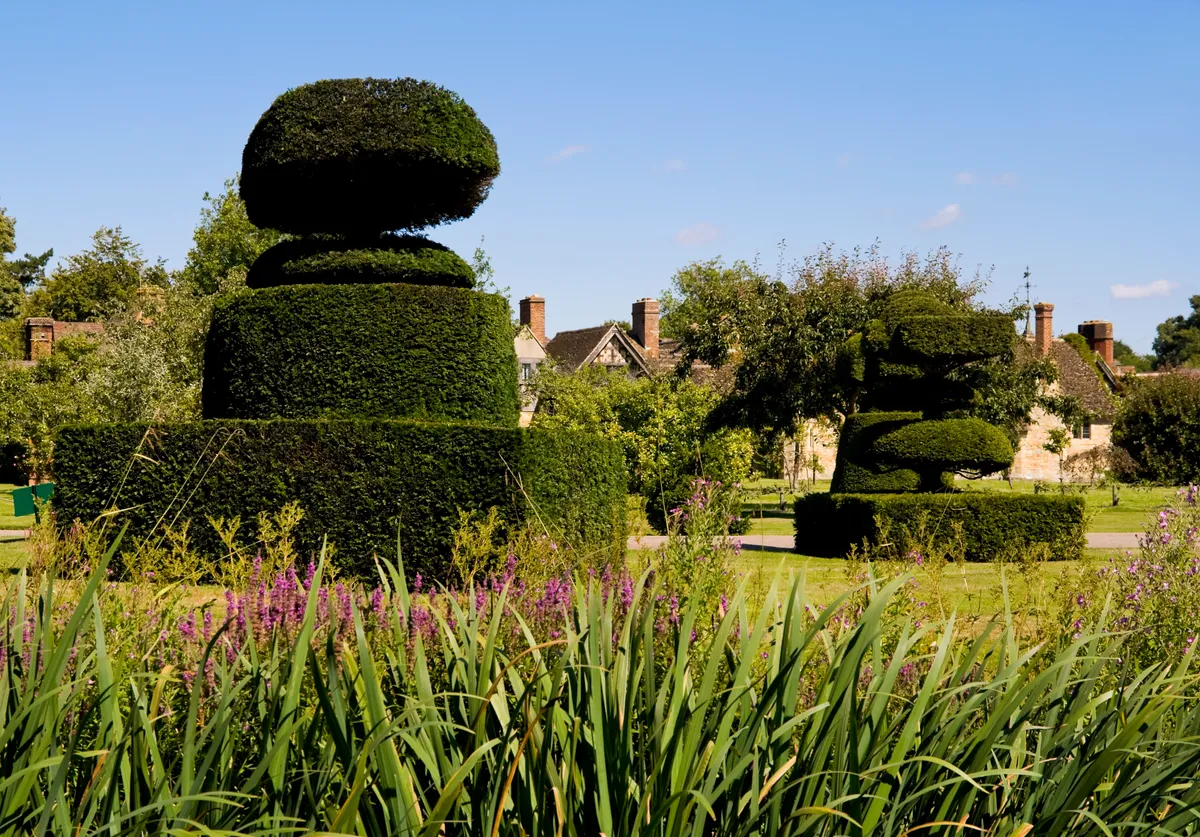
Plant-lovers will thrill to the restored 100-metre herbaceous border and the rose garden with more than 5,000 bushes.
Inside the house, Viscount Astor’s vision brings to life the happy childhood home of the girl who would be queen for a thousand days, and the religious tensions that led to her downfall.
Visit Hever Castle: Opening times vary. Entry: Garden £19.05; castle and gardens £23.10.
Hillsborough Castle and Gardens, Northern Ireland
With more than 100 acres of ornamental gardens, peaceful waterways and picturesque glens, Hillsborough Castle is a year-round attraction with a host of events for all the family.
Owned by the Anglo-Irish Downshire family from the early 1600s, the grounds have been the focus for magnificent entertainments from the 19th century onwards.
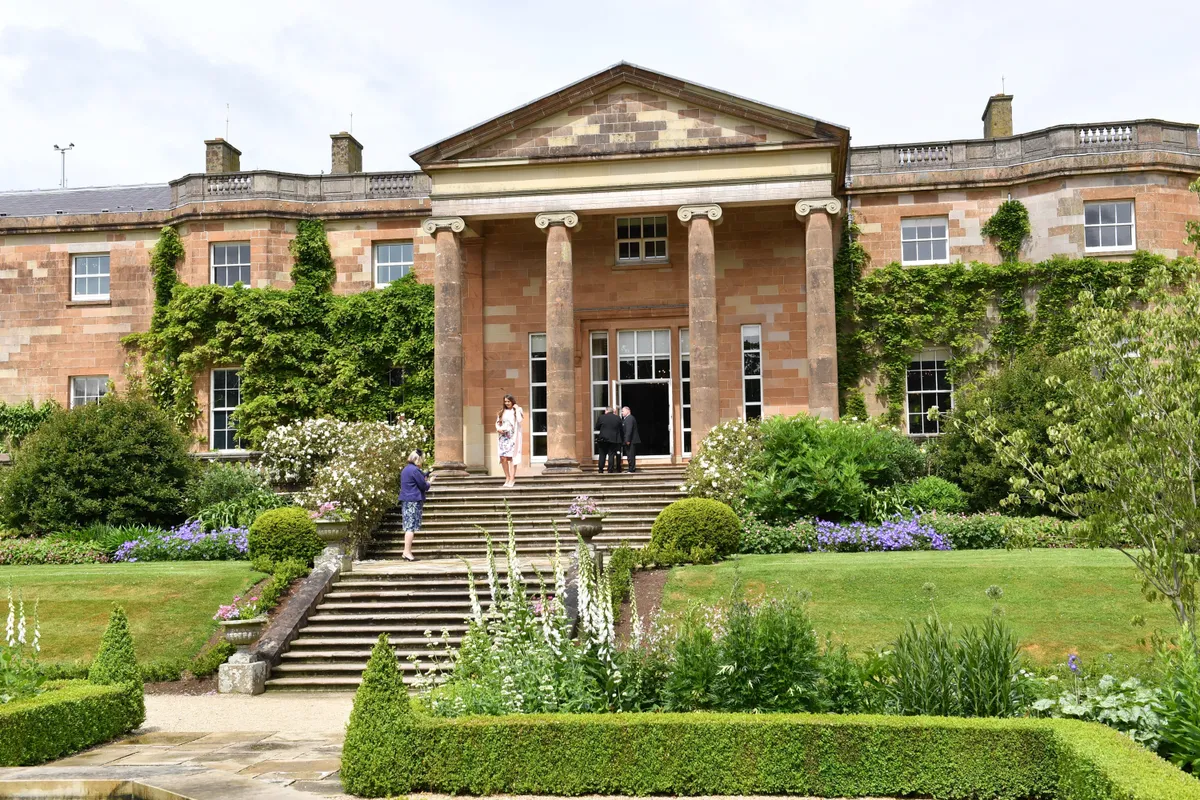
Sold to the British Government in 1925, it became the Governor’s residence, home to visiting dignitaries and royalty. Queen Elizabeth planted a magnolia tree here as part of her Coronation celebrations in July 1953, which formed the focus for floral tributes on her death in 2022.
Since 2018, Historic Royal Palaces have transformed the castle and grounds as a major visitor destination.
A reimagined four-acre walled garden with central pavilion provides a sensory delight with herbaceous borders, apple orchard and seasonal produce.
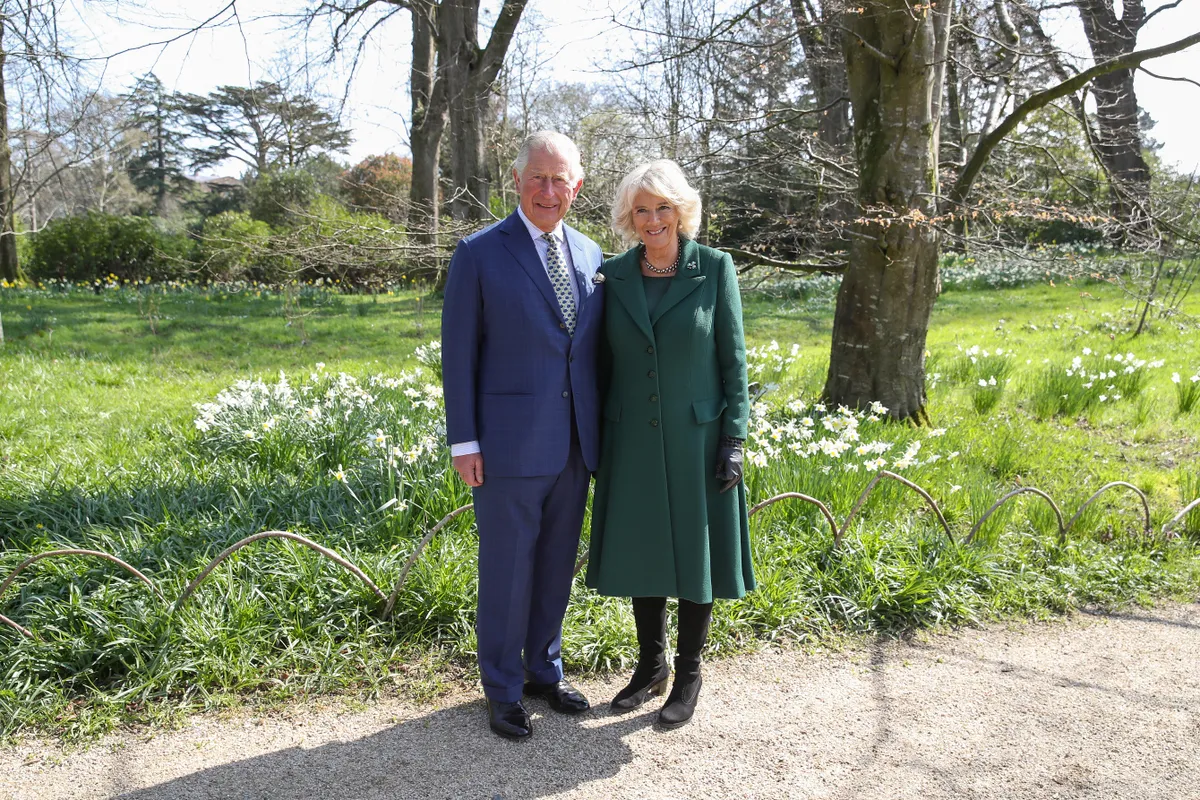
Insects and butterflies flock to the borders of nepeta, lavender and iris, and pollinate the heritage vegetable and apple varieties retained from previous centuries and used in the nearby café.
Formal gardens flank the castle on two sides with terraces giving on to immaculately managed topiary and flower gardens, themselves leading onto the tree planted lawns.
Children will delight in the Imaginary Menagerie, an animal-inspired play trail, celebrating the domesticated animals and wildlife that have made the gardens their home over the centuries with kingfishers, cows and even carriage horses celebrated as you wind past round the lake past the Shell Grotto and Plunge Pool.
Inside, the magnificent state rooms tell the story of the families and politics that shaped the castle.
Visit Hillsborough Castle and Grounds: Opening times vary. Entry: Gardens £10
Powis Castle and Gardens, Powys
Perched atop arcaded garden terraces, the castle of Powis towers over the surrounding landscape.
Stronghold of Welsh Princes, the castle combines medieval majesty with Renaissance-style gardens.
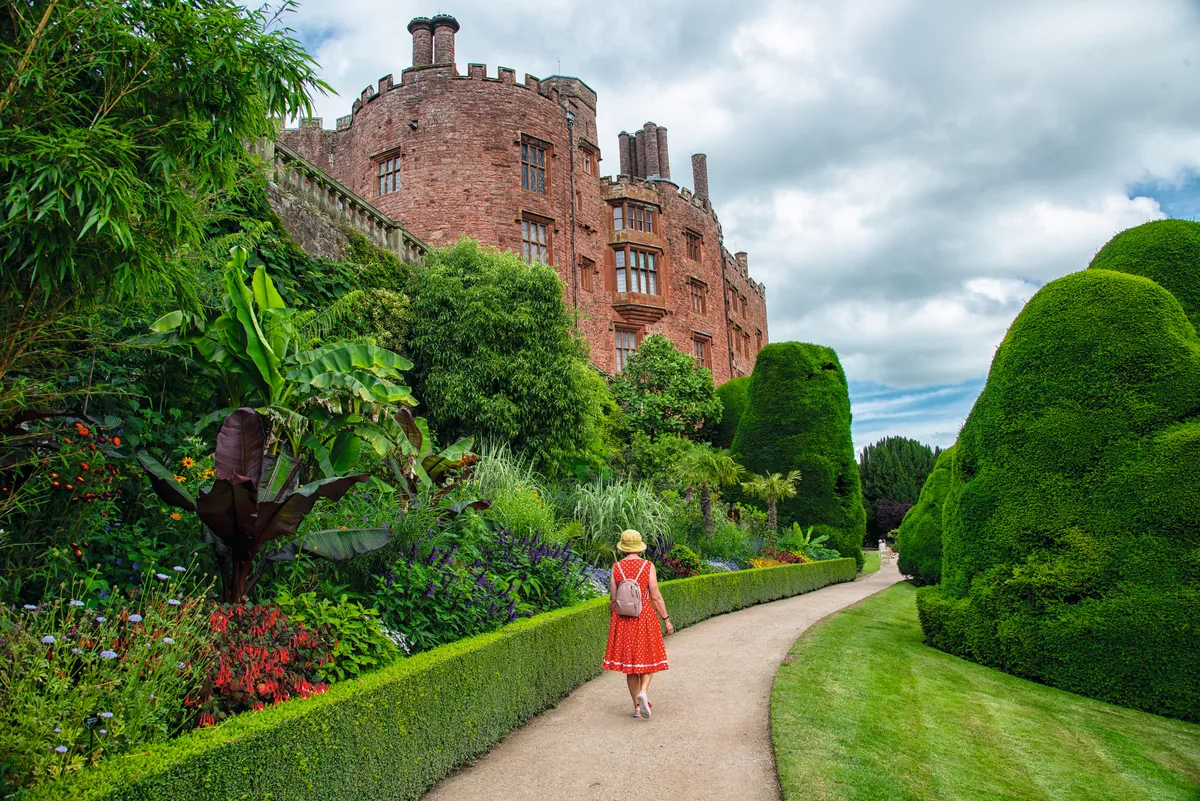
Gruffudd ap Gwenwynwyn was the 13th-century prince who first built a castle here to protect himself against the northern Welsh, but it was the courtier Sir Edward Herbert (nephew of Catherine Parr, sixth wife of Henry VIII) whose family were to make it their home for almost four centuries.
The royalist William Herbert created the magnificent terraces in the 1680s, and his son added a spectacular water garden in the Dutch style on the site of the present lawn.
Herbert’s finely clipped topiary survives as the famous yew ‘tumps’ lolling along the terrace arcades and towering over the statues.
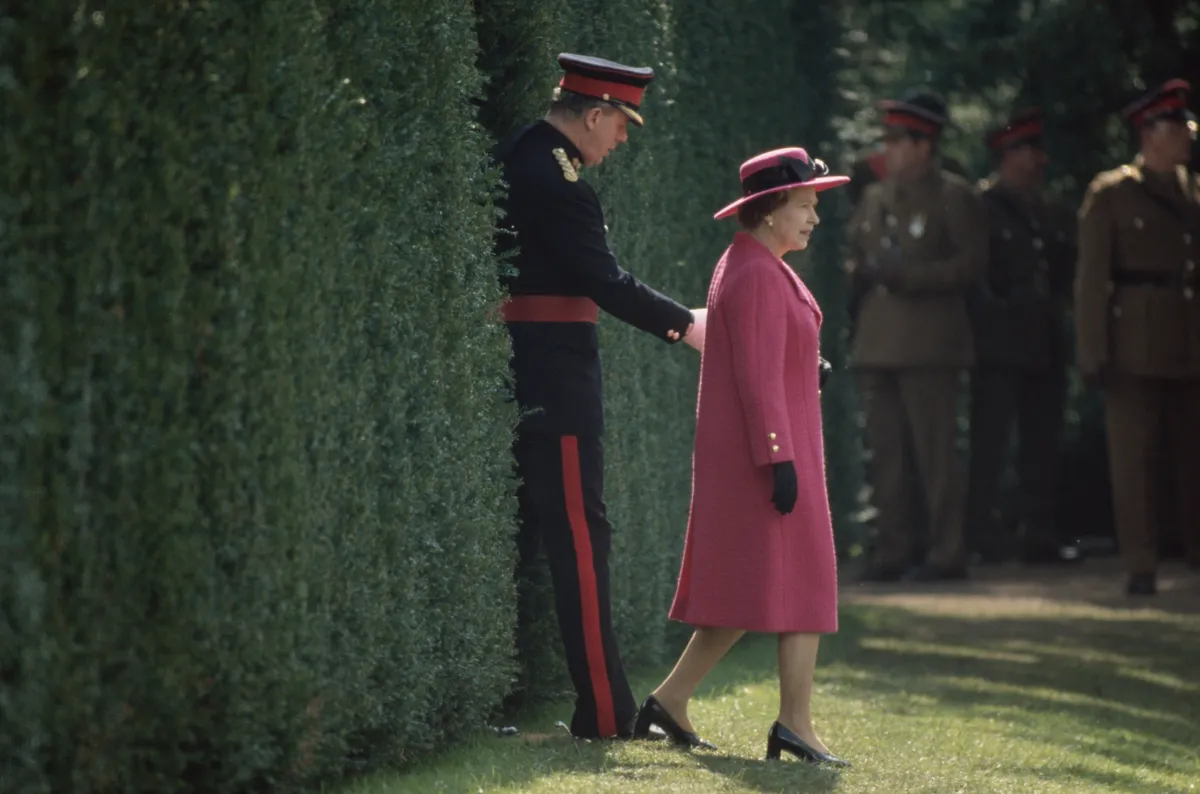
When the Prince and Princess of Wales visited the castle in 1909 they saw the garden much as it is today, a glorious mix of formal gardens, cottage style flower borders, croquet lawn and meticulously trimmed fruit trees, all the creation of Lady Violet (1865-1929) wife of the 4th Earl of Powis.
Inside the castle, the 4th Earl recreated the 17th-century décor of his ancestors with views across the gardens to the wooded ridge known as the ‘Wilderness’ with its woodland walks alongside ancient oaks.
A plunge pool and secret lake add cool waters to the Welsh Paradise. Look out for the heraldic wyverns guarding the great iron gates to the Fountain Garden, a present from Lady Violet to the 4th Earl, each holds a mysterious severed hand in its mouth.
Royal Botanic Garden Edinburgh
From the craggy heights of Benmore to the elegant exotics of Logan and Dawyck, the Edinburgh ‘Botanics’ comprises not one but four extraordinary gardens spread across Scotland. Together, the four garden are home to one of the largest and richest plant collection on Earth.
Originating in central Edinburgh in the 17th century, the predominantly medicinal collection gained its Royal Charter in 1699 and soon became famous for its collections of plants from round the world.
In 1713 the Keeper of the Garden, George Preston, was able to boast “if you have any exotic or rare seeds to send me… I am more capable to preserve them then my predecessors were.”
Moving sites several times to escape the pollution of old Edinburgh the gardens settled at Inverleith in 1820 where the iconic conical Tropical Glasshouse was created in 1834, joined 20 years later by the classical outlines of the Temperate Glasshouse, both of which still greet visitors to the Edinburgh gardens today.
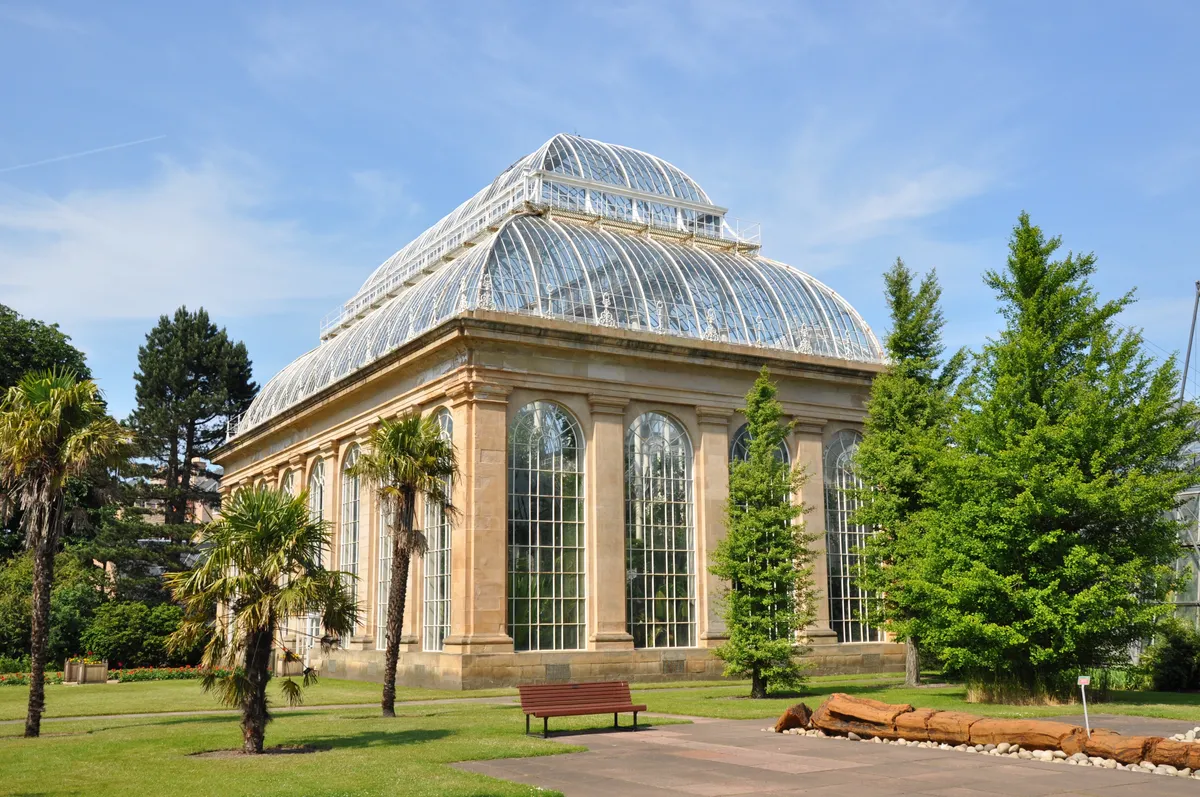
Nineteenth-century plant hunters David Douglas and George Forest, famous equally for their Scottish hardiness and botanical skills, inspired the acquisition of regional gardens.
With unique micro-climates, the gardens also retain their distinctive styles from the gardenesque style of Dawyck to the Chilean Rainforests and Japanese Valleys of Benmore.
Chinese Azaleas, Himalayan blue poppies, South African lilies and Australian palms thrive among native Scottish plants and a tour of all four gardens will take you round the world, while cafés at each will ensure you are back in time for tea.

Visit Royal Botanic Garden Edinburgh: Open daily. Entry: Free
Savill Garden, Surrey
Informal walks, towering trees and winding streams make this constantly evolving garden a year-round delight.
Creating a horticultural heart in the centre of ancient Windsor Great Park, the garden was the inspiration of Eric Savill, the park’s deputy ranger. George V and Queen Mary visited often during its creation from 1932 to 1939, with the Queen commenting on one occasion: “It’s very nice, Mr Savill, but isn’t it rather small?”
At 35 acres, the Savill Garden may be dwarfed by Windsor Great Park, but its variety of trees and shrubs make it one of the most important 20th-century gardens.
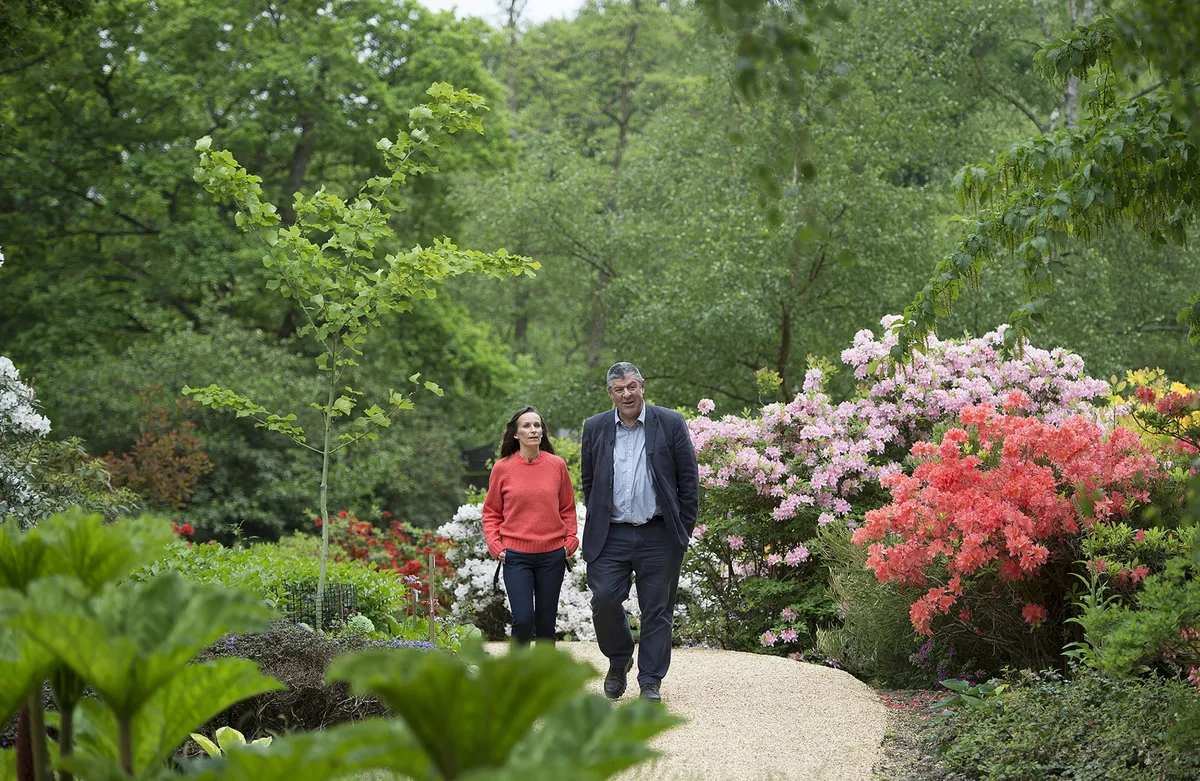
Initially a spring and woodland garden, with a magnificent range of rhododendrons, it blossomed with different horticultural collections.
In 1978, an old rose garden made way for a Dry Garden with Mediterranean plants such as alliums, cistus and Jerusalem sage reflecting droughts of the previous years.
The Golden Jubilee Garden offers a modern take on a cottage garden, while a striking walkway, opened by Queen Elizabeth II, in 2010 gives an aerial view over the Rose Garden as scents waft upwards.
Visit in autumn for colourful maples, rare acers and sweet chestnuts or crisp winter days for flowering witch-hazel, brilliant red and yellow dogwood, followed by the sweet smell of daphne and early honeysuckles and the summer roses.
Visit The Savill Garden: Open daily. Entry: £8.95.
Moseley Old Hall, Staffordshire
As intricately patterned as an embroidered sampler, this recreated 17th-century garden commemorates the dramatic arrival of King Charles II at Moseley Old Hall in 1651.
Fleeing the Parliamentarian Army in the wake of disastrous defeat at the Battle of Worcester, the king flung himself on the mercy of the Hall’s owners, seeking refuge and in fear for his life.
Royalist sympathisers and Catholics, the Whitgreave family rallied to his aid, concealing the king under the floorboards of a ‘frippery cupboard’ before assisting him onwards towards France and liberty.
Whatever gardens Moseley had at the time of the king’s dramatic escapes have not survived down the centuries and the present garden is based on a design for a knot garden laid out by the Reverend Walter Stonehouse between 1631 and 1640 at his rectory in Darfield, South Yorkshire.
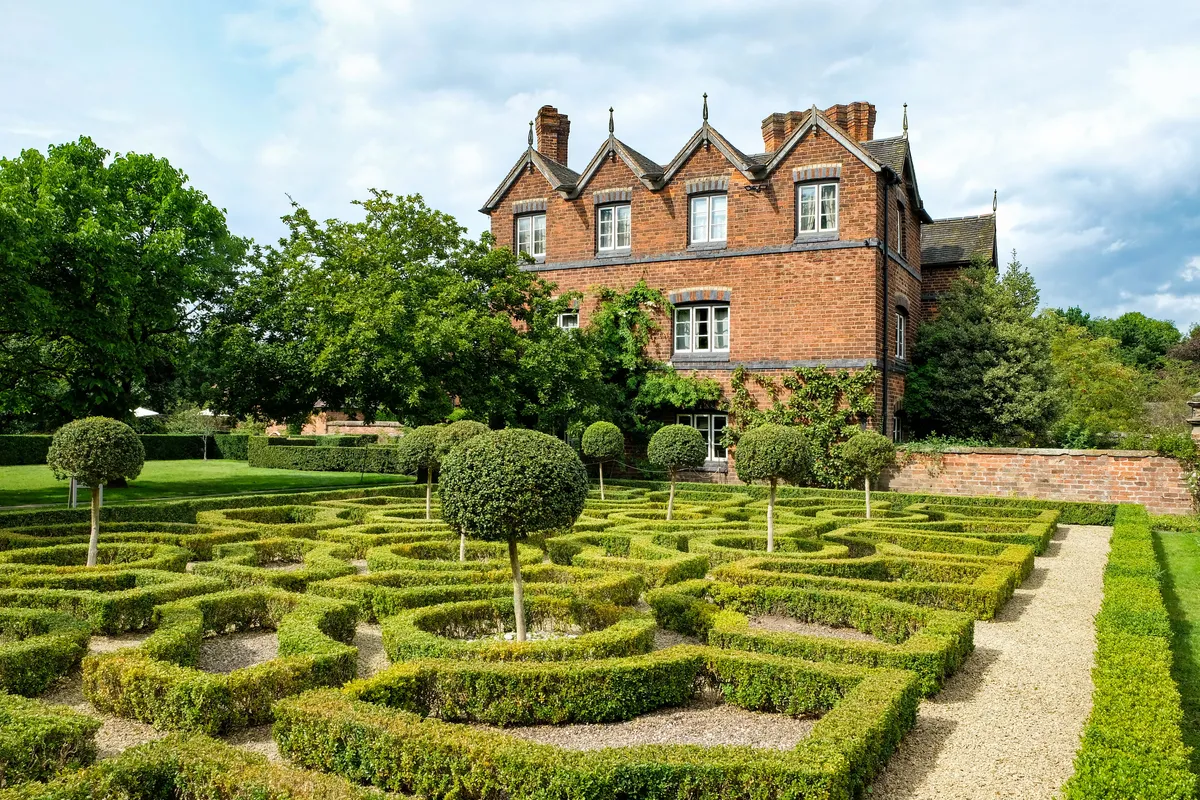
An adjoining orchard contains more than 20 heritage varieties of apples and pears, including continental varieties such as Rambour Franc and Nonpareil, which would have been well known to Charles II even before he fled to France.
A traditional woven bee-skep takes pride of place in the old orchard wall, essential for pollinating and sweetening the fruits and honey.
In the kitchen and herb gardens, an array of plants produces everything a 17th-century household might need for food and medicines, even in the event of a fleeing monarch arriving at your door.
Inside the Hall, there are fine views of the knot garden and a chance to peek into Charles’ cramped hiding place under the linen.
Visit Moseley Old Hall: Opening times vary. Entry: £10 (house and gardens)

